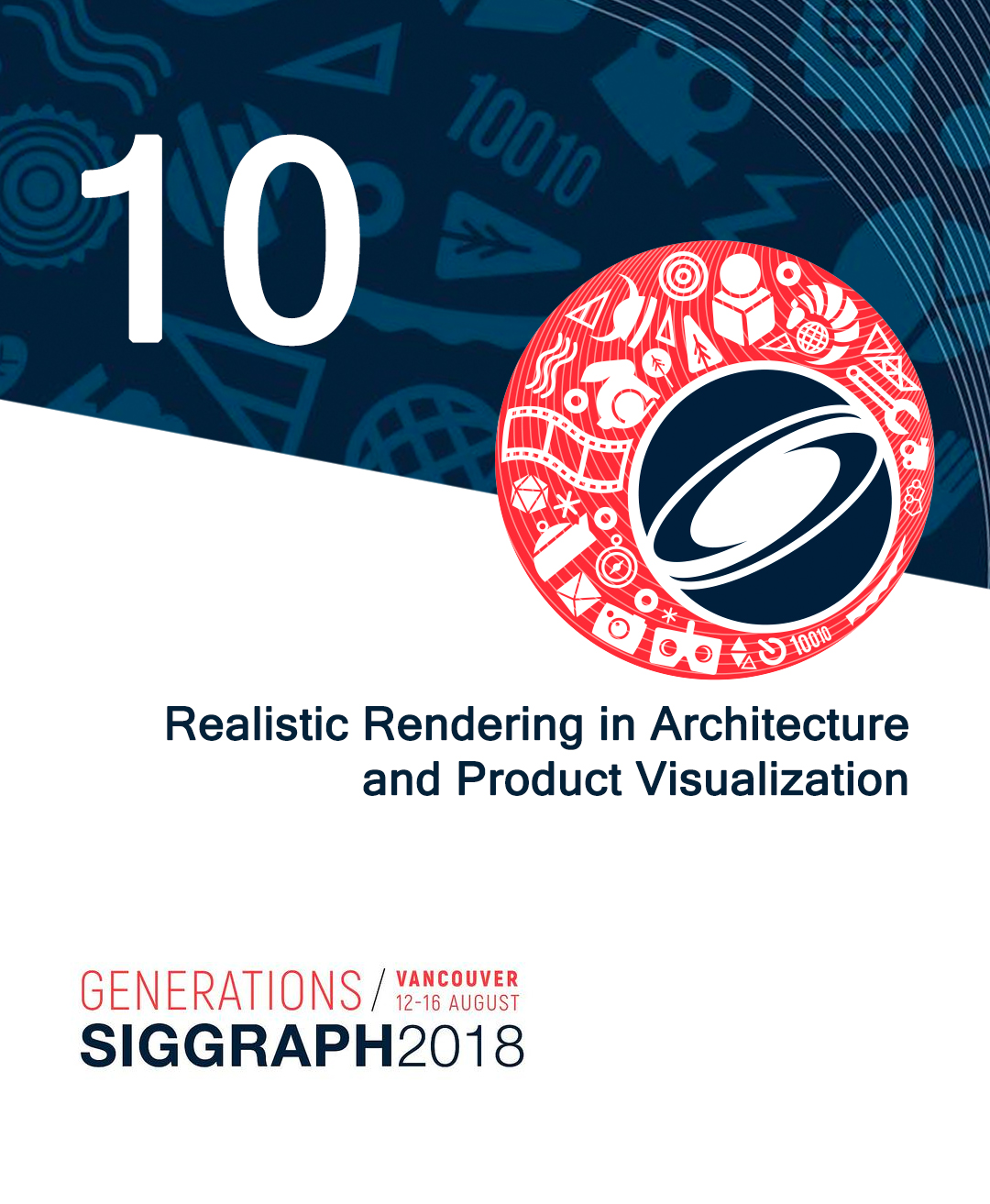“Realistic Rendering in Architecture and Product Visualization” by Karlık, Koylazov, Jensen, Ludwig and Chevallier
Conference:
Type(s):
Entry Number: 10
Title:
- Realistic Rendering in Architecture and Product Visualization
Course Organizer(s):
Presenter(s)/Author(s):
Abstract:
In the recent years, VFX and computer animation witnessed a “path tracing revolution” during which most of the rendering technology has converged on the use of physically-based Monte Carlo techniques. This transition sparked a renewed interest in the topic of physically-based rendering but the focus has been almost exclusively on the application of these method in the movie industry. In the meantime, a significant segment of the realistic rendering market – that focusing on architectural, automotive, and product visualization – has been relying on the physically-based rendering technology since the beginning of the millennium. Despite that, relatively little attention in the communication at Siggraph has been so far paid to this market segment.
The goal of this course is to fill this gap. We present user expectations in the “archviz” and product visualization markets and discuss the technological and engineering choices that these expectations imply on the rendering engines used in these fields. We juxtapose this technology to rendering for motion pictures and point out the most significant differences. Specifically, we discuss the pros and cons of CPU and GPU rendering, simple (unidirectional) vs. more advanced (bidirectional) light transport simulation methods, different approaches to “lookdev” and material design, artist workflows, and the integration of the renderers into the image creation pipeline. We conclude by discussing some open technological issues along with the constraints that the research community should consider so that the the developed methods respect the needs and expectations of the target user group.
Prerequisites
The course will be generally kept at a high-level and will not go into unnecessary technical details. We assume some general knowledge of the technology used in physically-based realistic rendering.
Intended Audience The course aims at a wide audience including students, researchers, software developers, and enthusiasts in the area of realistic rendering. Technically oriented artists can also benefit from the course. The goal is to educate the audience on the specific goals and tradeoffs that one encounters when developing technology for architectural and product visualization.
Level
Beginner
Description
This course focuses on physically based realistic rendering in architectural and product visualization. The goal is to acquaint the SIGGRAPH audience with the specific technical needs in this segment and their impact on the employed rendering technology. We also highlight the differences from the technology used in the movie industry.




